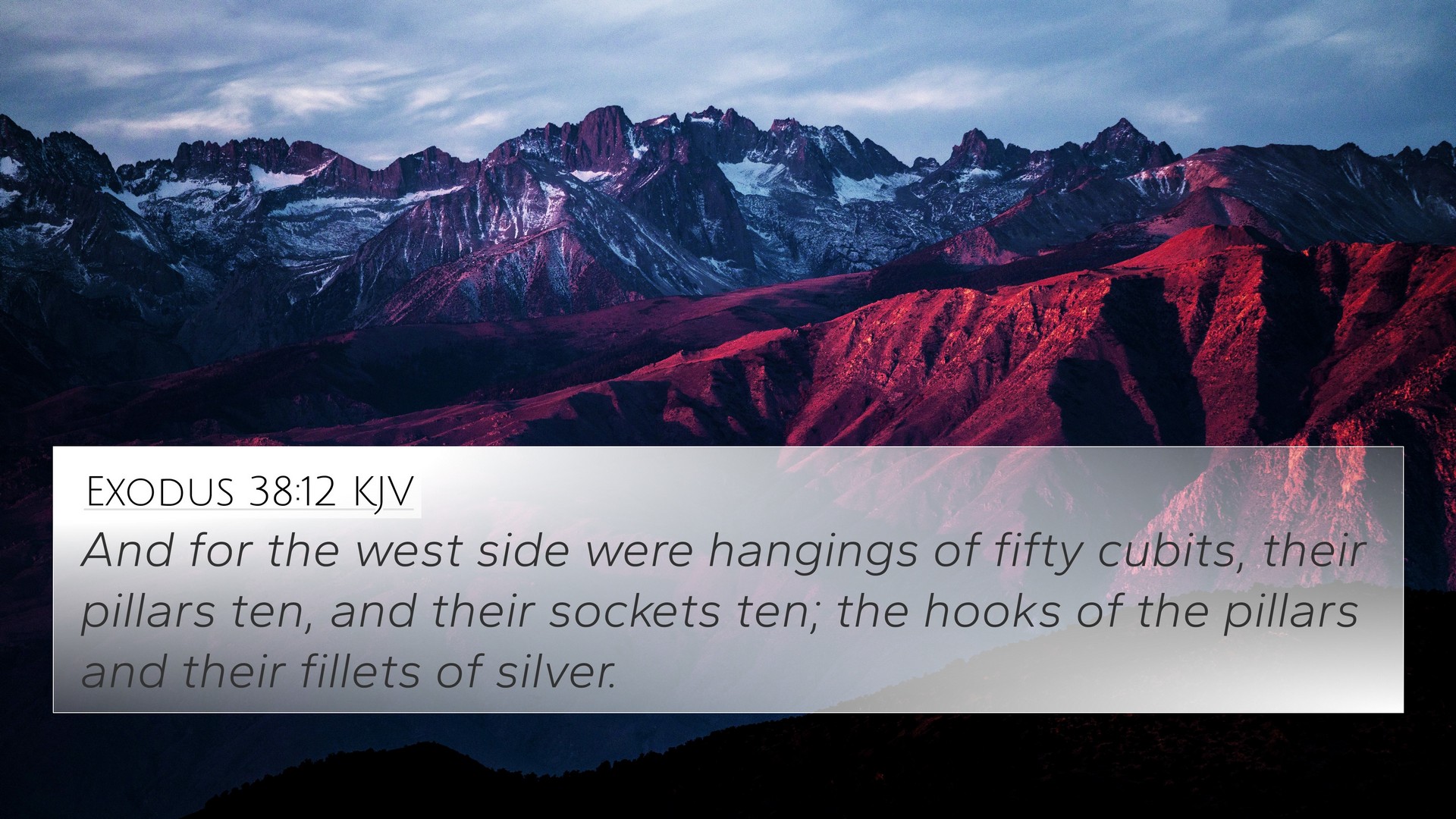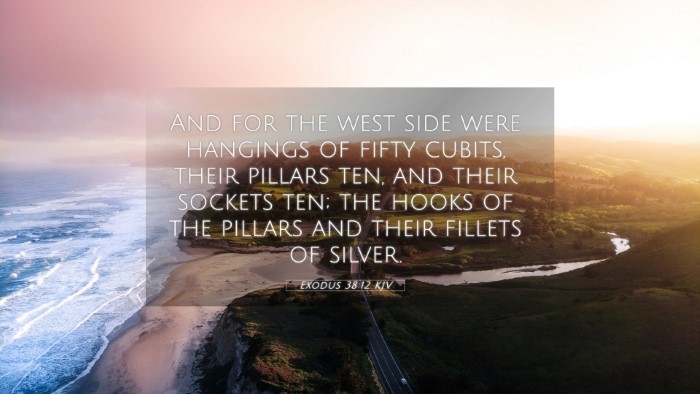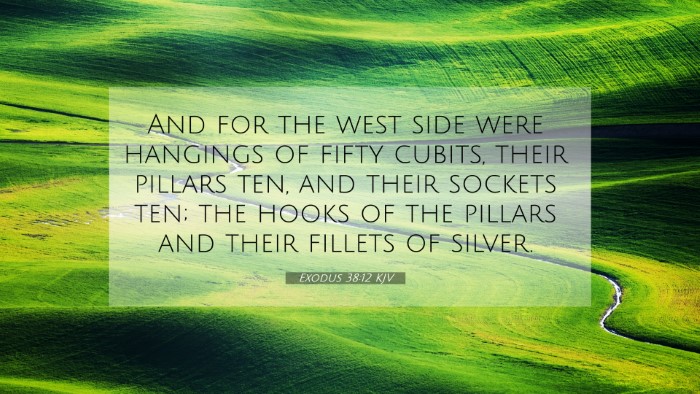Exodus 38:12 - Commentary and Meaning
Exodus 38:12 states: "And for the west side were hangings of fifty cubits: their pillars ten, and their sockets ten." This verse describes the construction details of the Tabernacle, specifically focusing on the western side. Below is a summarized interpretation and analysis drawn from various public domain commentaries.
Summary of Meaning
The construction of the Tabernacle, as outlined in this verse, illustrates the detailed and intentional nature of God's instructions for worship and His dwelling place among His people. Each measurement and material used serves both practical and symbolic purposes in the overall architecture of the Tabernacle.
Key Insights from Commentaries
-
Matthew Henry:
Henry emphasizes the perfection and precision of God’s designs. The specific mention of “ten pillars” and “sockets” underscores the importance of structure and order in worship. It also signifies the establishment of a holy space where God meets His people.
-
Albert Barnes:
Barnes notes that the Tabernacle's dimensions are significant in showing God's comprehensive plan for worship. The hangings serve as a boundary that signifies the holiness of the area, separating the sacred from the ordinary, thus inviting contemplation of God's presence.
-
Adam Clarke:
Clarke highlights the notion of symbolism in the Tabernacle's construction. The term "hangings" suggests a barrier, indicating the separation that sin creates between God and humanity, which is addressed through the sacrificial system that the Tabernacle facilitates.
Bible Verse Cross-References
Understanding connections between scripture enhances our appreciation of the Biblical narrative. The following verses complement Exodus 38:12:
- Exodus 26:1-6: Discusses the curtains of the Tabernacle, reinforcing the idea of God’s dwelling place.
- Hebrews 9:1-5: Reflects on the significance of the Tabernacle in the New Covenant context.
- 1 Chronicles 28:11-12: Chronicles the plans for the temple, revealing continuity in God's dwelling place.
- Matthew 27:51: Describes the veil of the temple being torn, symbolizing access to God now available through Christ.
- Revelation 21:3: Speaks of God dwelling with humanity, a culmination of the desire for divine presence that begins with the Tabernacle.
- Acts 7:44: Refers to the Tabernacle’s importance in Israel's history, establishing its role as a sacred site.
- 1 Peter 2:5: Connects believers as living stones, creating a spiritual house, echoing the Tabernacle's intent.
Thematic Connections
Examining Exodus 38:12 through the lens of thematic Bible verse connections reveals deep truths about God's relationship with His people:
- God’s desire for holiness and order is evident in the careful design of the Tabernacle.
- The presence of God among His people is a consistent theme that runs from the Tabernacle to the New Testament church.
- The sacrificial system established in the Tabernacle foreshadows the ultimate sacrifice of Christ.
- Inter-Biblical dialogue enriches our understanding of God's unchanging nature and how He engages with humanity across different eras.
Tools for Bible Cross-Referencing
To deepen the study of this verse and its connections, various tools can be utilized:
- Bible Concordance: Helps locate verses related to specific words and themes.
- Cross-Reference Bible Study: Engages the comparative analysis of related scriptures, enriching the understanding of Biblical themes.
- Bible Reference Resources: Comprehensive materials that aid in cross-referencing Biblical texts.
User Intent and Exploration
If you're searching for related scriptures or looking to understand the depth of Exodus 38:12, explore questions such as:
- What verses are related to Exodus 38:12?
- How do Exodus 26:1-6 and Exodus 38:12 connect?
- What are the similarities between Exodus 38:12 and Hebrews 9:1-5?
Conclusion
Exodus 38:12 offers profound insights into God's holiness and His desire to dwell among His people. By engaging with various cross-references and commentaries, one can see the cohesive narrative woven throughout Scripture, symbolizing God's unchanging love and redemptive purpose. This exploration serves as a foundational study for anyone interested in Biblical analysis and cross-referencing, facilitating deeper understanding and appreciation of God's Word.


